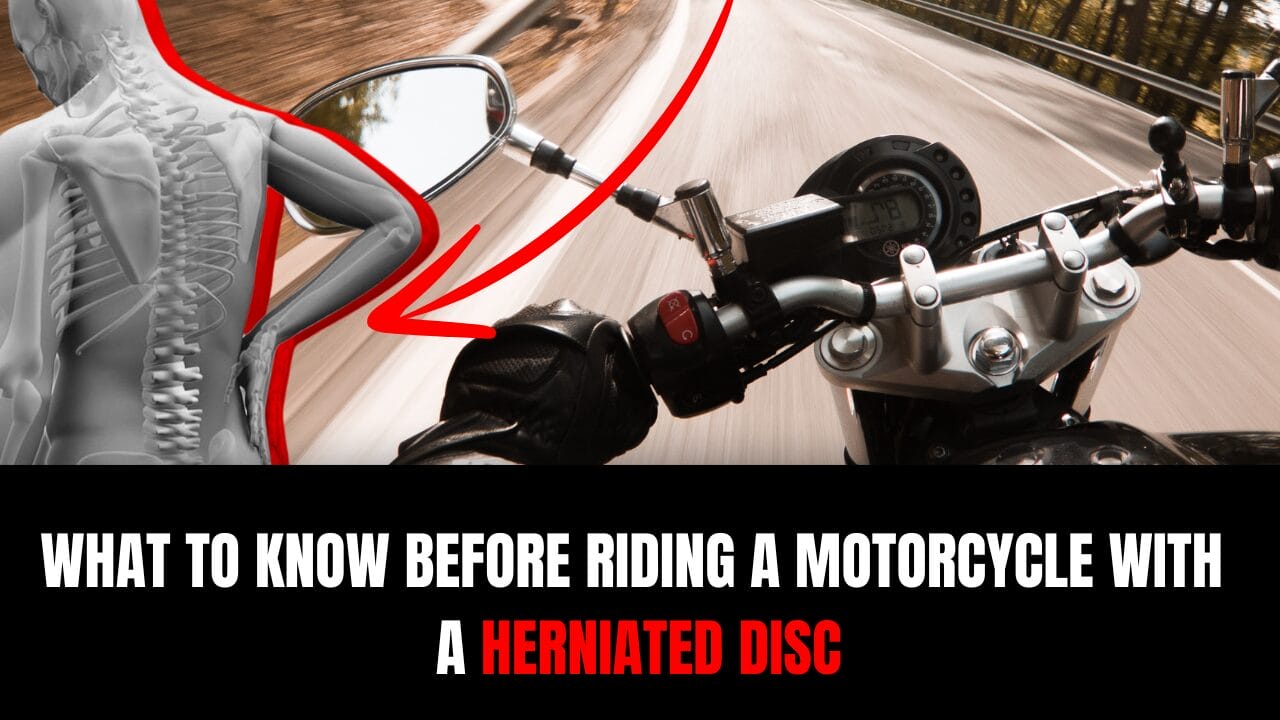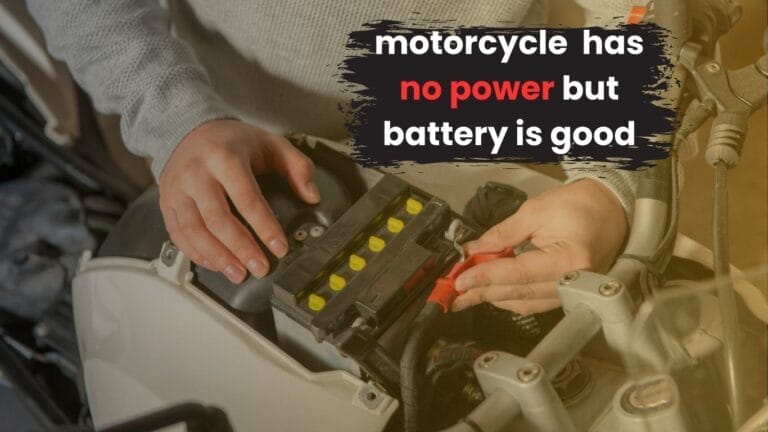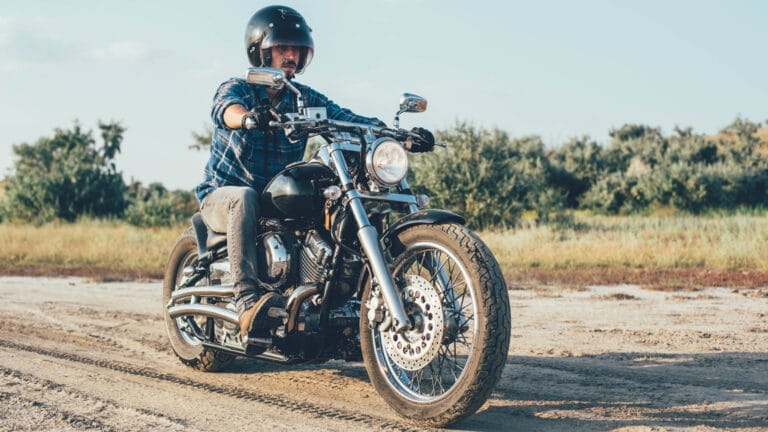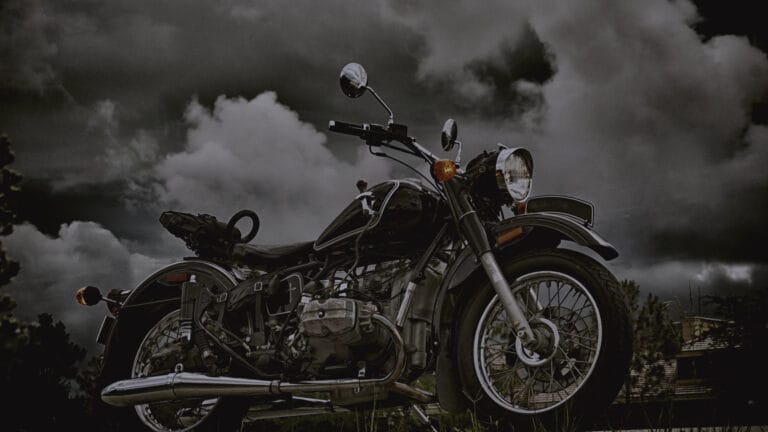can i ride a motorcycle with a herniated disc
Being a motorcyclist is like being on two wheels of pure freedom, but riding a motorcycle is challenging when your back’s been giving you grief. Many of my friends ask, “Is it even possible to ride with this pain in the back?”
The short answer is yes—but there’s a bit more to it than just hopping on your bike and hitting the road. With the right approach, you can stay on the road and enjoy the ride without worsening your back pain. It’s all about making smart adjustments and listening to your body. Whether tweaking your posture, choosing smoother routes, or knowing when to take a break, small changes can make a big difference. After all, riding should be about freedom, not fighting through discomfort.
In this article, you’ll get practical tips on how to make your ride more comfortable, from adjusting your bike setup to wearing the right gear. You’ll also learn how to manage pain during and after your rides and when it might be time to consider taking a break for your health.
Can I Ride a Motorcycle with a Herniated Disc?
Yes, you can. But it’s not as simple as just gritting your teeth and pushing through the pain. Riding with a herniated disc is like balancing on a tightrope—you need to find that sweet spot where you’re still enjoying the ride without worsening your condition.
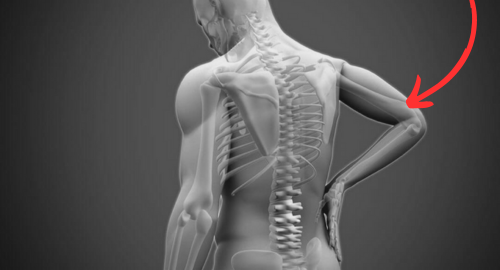
When you are on the road, your spine is what supports you. When a disc in your back is herniated, it’s like having a tire with a slow leak—ignore it, and you’re asking for trouble. But with some precautions, you can still hit the road. The key is to be mindful of how your body feels and adjust your ride accordingly.
Get the go-ahead from your doctor before riding. Once you have their approval, focus on making your ride easier on your back. Adjust your posture, use supportive gear, and consider bike modifications to reduce strain.
What to Know Before Riding a Motorcycle with a Herniated Disc
Before you jump on your bike, there are a few things you need to keep in mind to protect your back and ensure a safe ride. Riding with a herniated disc isn’t just about managing the pain; it’s about preventing further injury and staying comfortable on the road.

1. Get Medical Clearance:
Your first step should always be to check in with your doctor. They can evaluate your condition and tell you if riding is safe. Ignoring professional advice could lead to more severe issues down the road.
2. Understand Your Limits:
Everyone’s pain threshold is different. So, it’s essential to recognize when your body is telling you to take it easy. If riding aggravates your symptoms or you feel a sharp increase in pain, it’s time to pull over and reconsider your options.
3. Adjust Your Bike for Comfort:
Your bike might need a few tweaks to accommodate your condition. Consider adjusting the handlebars, adding a backrest, or changing the seat to better support your back. These changes can make a world of difference in reducing strain.
4. Use Supportive Gear:
Consider wearing a lumbar support belt or a cushion to relieve pressure on your lower back. Proper gear can help you maintain better posture and reduce the impact on your spine while riding.
5. Plan for Regular Breaks:
Long rides can take a toll on anyone, especially someone with a herniated disc. Plan to stop frequently to stretch and move around. This helps prevent stiffness and keeps your back from locking up.
6. Stay Mindful of Road Conditions:
Bumpy roads and sudden jolts can exacerbate your symptoms. So, if you want to keep your spine in good shape, it is best to avoid hard terrain and instead follow more gradual paths.
By understanding these factors and taking them seriously, you can better prepare yourself for the ride. Your back will thank you for it, and you’ll be able to enjoy your time on the road with less worry.
How to Ride Comfortably with a Herniated Disc
Riding with a herniated disc doesn’t have to be a painful experience. With a few smart adjustments, you can make your ride more comfortable and keep your back in check. Here’s how to do it.
1. Perfect Your Posture:
Your posture is everything when it comes to riding with a herniated disc. If you slouch or lean forward too much, you might put unnecessary pressure on your spine and find the ride intolerable. Instead, sit up straight, keep your shoulders relaxed, and try to distribute your weight evenly across your seat. Think of it like balancing a broomstick on your hand—keep it straight, and it stays steady.
2. Tweak Your Handlebars:
Handlebars that are too high or too low can throw your posture out of whack. Adjust them to a position you can comfortably reach without hunching over or stretching. Ideally, your elbows should be slightly bent, and your hands should feel natural on the grips, almost like shaking hands with an old friend.
3. Consider a Backrest:
A backrest can be a game-changer for riders with back issues. It provides support where you need it most and helps maintain that all-important straight posture. It’s like having a supportive friend behind you, keeping you upright and comfortable.
4. Upgrade Your Seat:
The stock seat on your bike might not be doing your back any favors. With a supportive and ergonomically sound seat, you can coast through those miles pain-free. Thus, you might want to consider getting a more comfortable seat that is designed for long-distance travel.
5. Adjust Your Footpegs:
The role of your feet in your comfort is more significant than you may realize. If positioned too high or too low, they can throw off your posture and pressure your back. Adjust them so your knees are slightly bent, allowing you to absorb shocks better and keep your spine aligned.
6. Use a Lumbar Support Belt:
If you want to ride with more stability and less strain on your lower back, a lumbar support belt is a good investment. It’s like giving your spine a gentle hug, keeping everything in place while you enjoy the ride.
7. Smooth Out the Suspension:
If your bike’s suspension is too stiff, every bump in the road will jolt your spine. Consider adjusting the suspension to be a bit softer so it absorbs more of the shock.
By making these adjustments, you can transform your ride from a painful chore into a comfortable adventure. It’s all about finding what works best for your body and ensuring your bike is set up to support you, not strain you.
Managing Pain During and After the Ride
Pain management is crucial when riding with a herniated disc. It’s not about toughing it out; it’s about being smart and proactive so you can enjoy your ride and bounce back afterward. Here’s how to keep the pain in check during and after your ride.
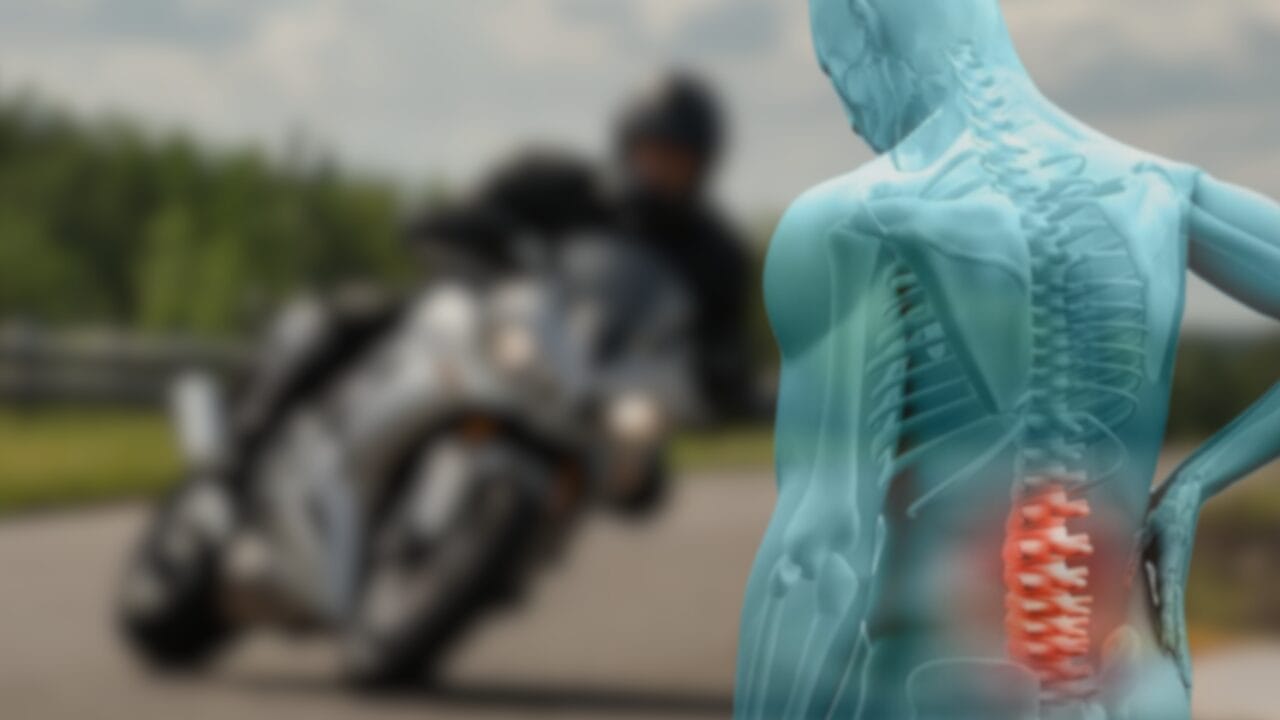
1. Stay Ahead of the Pain:
Don’t wait until you’re in agony to take action. If your back tends to flare up, take an over-the-counter pain reliever before you hit the road. It’s like putting out small fires before they turn into a full-blown blaze. Just be sure to stick to what your doctor recommends.
2. Keep Moving:
Sitting in one position for too long can make your back stiff and sore. Change your weight, adjust your posture, and stretch your legs whenever possible. Think of it as keeping your muscles on their toes—flex and relax to prevent them from tightening up.
3. Use Heat and Cold Therapy:
After your ride, alternate between heat and cold therapy to soothe your back. Ice packs can reduce inflammation, while a heating pad can relax tight muscles. It’s like giving your back a well-deserved spa treatment after the workout it just had.
4. Stretch It Out:
Get some stretching done after you leave your bike at the curb. Try some gentle stretches to loosen up those muscles and improve flexibility. It’s like hitting the reset button for your muscles.
5. Stay Hydrated:
Dehydration can worsen muscle pain, so be sure to drink plenty of water before, during, and after your ride. Water keeps everything in your body running smoothly, including your muscles and discs. Imagine your body as a well-oiled machine that requires fuel in order to function efficiently.
6. Listen to Your Body:
Quit if the discomfort gets too much while you are riding. There’s no shame in pulling over and taking a break or cutting your ride short. Remember, it’s better to take a step back now than try to force through and end up sidelined for weeks.
By staying on top of your pain management routine, you can keep the discomfort at bay and enjoy the ride with fewer worries. It’s all about being kind to your body and giving it the care it needs before, during, and after each adventure on the road.
Planning Your Ride: Routes and Timing
When you’re dealing with a herniated disc, the route you choose and the timing of your ride can make a big difference in your comfort level. If you put some planning into your rides, you can make them less taxing on your back and more fun.
1. Choose Smooth Routes:
Not all roads are created equal—some are smoother than others, those are your best friends when you’ve got a herniated disc. Avoid routes with many potholes, gravel, or uneven pavement. Instead, stick to well-maintained roads where the ride is less jarring. It’s like choosing the scenic route over the shortcut; it might take a bit longer, but it’ll be much more pleasant anyhow.
2. Avoid Rush Hour
Heavy traffic means more stop-and-go riding, which can be tough on your back. If possible, plan your rides when the roads are less congested. Early mornings or late evenings can be ideal, offering smoother rides and a more relaxed pace. Plus, you’ll enjoy the road without the stress of dodging cars.
3. Plan for Shorter Rides:
Long rides can be taxing, especially if your back is already bothering you. So, instead of tackling a marathon trip, break it up into shorter and more manageable segments. This way, you can enjoy the ride without pushing your back to its limits. Think of it as savoring small bites of your favorite meal instead of scarfing it down all at once.
4. Check the Weather:
Riding in extreme weather—scorching heat or freezing cold—can tense your muscles and worsen your back pain. So, anytime before you head out, check the forecast and then plan your ride. Make sure the weather is more moderate when you will be riding. It’s like planning a picnic; you want the conditions to be just right to enjoy the experience fully.
5. Be Ready to Turn Back:
Sometimes, despite all your planning, the ride just isn’t as smooth as you’d hoped. So, always have a backup plan, just in case. You never know when you might encounter unforeseen road conditions or your back giving out on you. There’s no shame in cutting a ride short if it means avoiding unnecessary pain. After all, the road will still be there tomorrow.
It’s all about taking some extra steps like careful route planning, punctuality, etc. to ensure your back stays happy while and after riding, so you can keep the wind in your hair and the joy in your ride.
When to Consider Quitting Riding
Unfortunately, there may come a point when continuing to ride with a herniated disc is no longer worth the risk. It’s a tough pill, but your health should always come first. Here’s what you need to watch out for when deciding whether to hang up your helmet.
1. Worsening Symptoms:
If your pain gets worse every time you ride, it’s a red flag that your condition might be getting worse. Increased numbness, tingling, or weakness in your legs indicates your herniated disc is no longer able to handle the stress well. Ignoring these symptoms could lead to permanent damage, and no ride is worth that.
2. Loss of Control or Stability:
Riding requires precise control and balance. If your back pain is causing you to lose control of your bike or struggle with stability, it’s time to rethink your riding habits. An accident caused by compromised control could have far-reaching consequences, both for you and others on the road.
3. Constant Discomfort Off the Bike:
Ask yourself if riding makes your backache worse if the pain stays after you have parked your bike or if even simple tasks are becoming more difficult, you might need to stop bike riding. Persistent pain can affect your overall quality of life, make it hard to do anything
4. Doctor’s Advice:
If your doctor recommends stopping, it’s essential to take their advice seriously. They’re not just being cautious but looking out for your long-term health. A herniated disc is nothing to take lightly, and continuing to ride against medical advice could lead to irreversible damage.
5. Emotional Toll:
Let’s face it—constantly battling pain while trying to enjoy something you love can wear you down mentally and emotionally. If riding no longer brings you joy and instead fills you with anxiety or frustration, it’s worth considering whether it’s time to take a break.
Deciding to quit riding isn’t easy, but listening to your body and prioritizing your well-being is essential. If the risks start to outweigh the rewards, it might be time to explore other hobbies that don’t compromise your health. Your love for riding will always be there, but taking a step back is sometimes the best way to protect your future.
Closing Words
As much as we all love the thrill of the open road, sometimes it’s important to put our health first. Riding with a herniated disc is possible, but it requires careful planning, adjustments, and most importantly, listening to your body. You might want to put away your helmet for a while if the ride is making you feel worse instead of better.
Remember, the road will always be there, and taking care of your back now means you can enjoy many more rides down the line. Stay safe, ride smart, and know when it’s time to take a break. Your future self will thank you.

